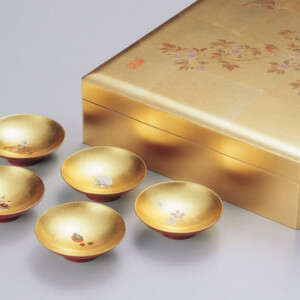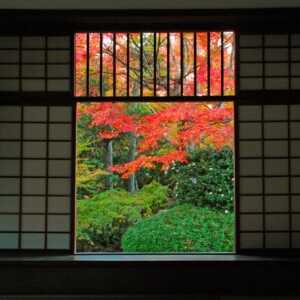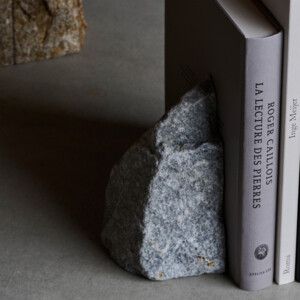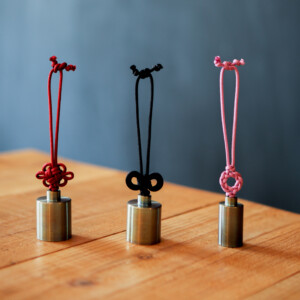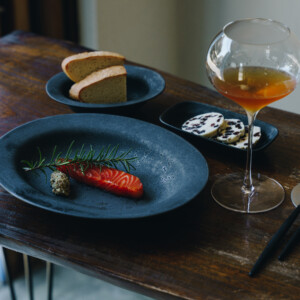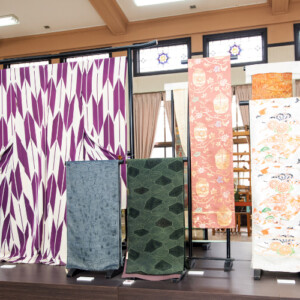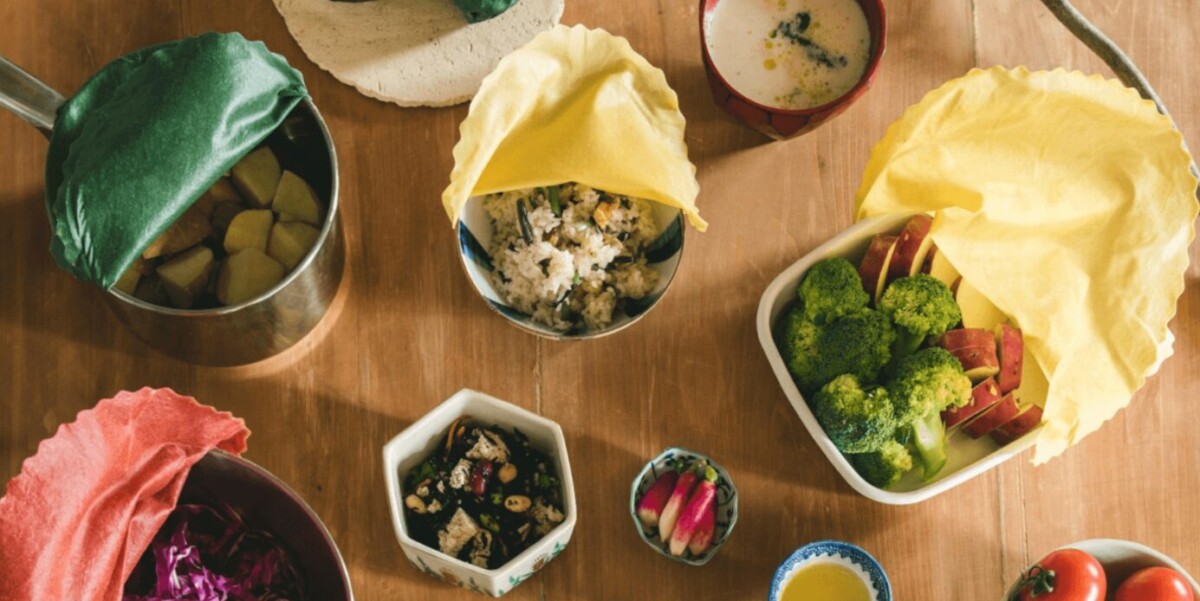
Eco-friendly, no-throw-away plastic wrap for everyday use.
In Australia, reusable eco wraps are very popular. The idea for ACO WRAP was born to fit in with the Japanese diet and lifestyle.
Based in Kameoka City, Kyoto Prefecture, aco wrap is manufactured using carefully handcrafted products and materials made in Japan.
Kitchen wraps are generally disposable. For those who feel somewhat “put-off” when considering the environment, we highly recommend the naturally derived, environmentallyfriendlyaco wrap.
By starting a life with aco wrap, your everyday life will become more comfortable.In this issue, wewill explain the appeal and features of aco wrap.
aco wrap
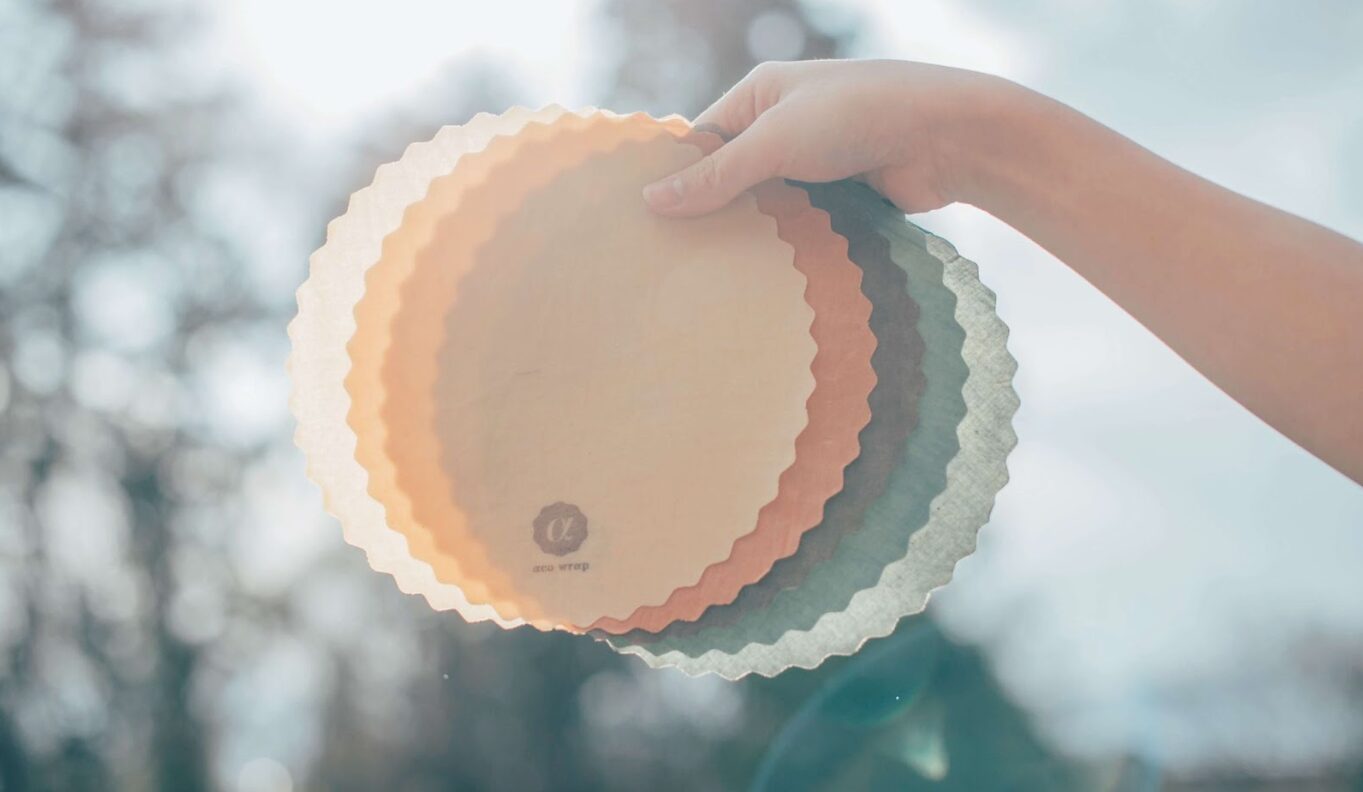
aco wrap is a kitchen wrap for food preservation made of honeydew-based oil and organic cotton. Each piece is carefully produced in Kameoka City, Kyoto Prefecture, which declares “zero plastic waste.
What is aco wrap?
aco wrap is made by soaking organic cotton fabric with oil based on honeydew collected from beehives in Gifu Prefecture.
The eco wrap used in Australia was created with the hope that many people in Japan would use it as well. Each item is carefully dyed and coated by hand, and we are committed to Made in Japan.
It can be used forabout one year.It is very easy to clean as well, as all you have to do is rinse it off with cold water. In addition, the product is made of materials that can be returned to the soil, making it environmentally friendly to the fullest extent.
Appealing Color Shades of Color
There are a total of five different colors available for aco wrap.
Mitsuro-iro,” which makes the most of the color of beeswax itself
Suoh-iro,” which is dyed by Akane and has a texture unique to herb-dyeing.
Mud color” is dyed by soaking the cloth in the mud fields of Amami-Oshima after dyeing with tecchi-wood.
Jade-iro” dyed with indigo and Amami-Oshima’s lucky trees.
Blue” dyed with indigo and mud from Amami Oshima
The beautiful colors are dyed by the hands of craftsmen in Amami Oshima.
The colors are based on the combination of “kasane-irome”, a traditional Japanese color, and incorporate natural colors to match with seasonal vegetables.
Each of the beautiful, eye-catching colors are made with a focus on natural dyeing, so you can enjoy the natural colors and textures.
How to use and care
aco wrap softens with the warmth of your hand, so it fits all kinds of materials.
The ingredients are organic cotton, beeswax, jojoba oil, and natural resins, all of which are naturally derived, making it safe to use on foodstuffs.
It can also be used as a simple vegetable storage bag by attaching wraps together, or as a carrying bag for sandwiches and rice balls. When used as a lid, the material softens at the temperature of your hand, so by gently covering it with your hand, theviscosity ofthe aco wrapwill increase and it will fit the plate. If it is cooled in the refrigerator, it becomes hard, so it changes its texture to a light and airy one. Also, by wrapping the food in ACO WRAP,the moisturizing properties ofhoneydew and jojoba oilwork toprevent the excess food from drying out, making it last longer.
Some people may be a little reluctant to switch from disposable plastic wrap to reusable plastic wrap. For such people, we recommend first trying to use them together. Just by using them together, you can reduce the amount of disposable wrap used and experience the ease of use.
To care for it, simply hand-wash it in gently cold water. If you are concerned about stains, you can also wash it with mildly acidic dishwashing detergent. The reason for washing in cold water is that beeswax is sensitive to heat, and the coating is difficult to remove because the beeswax hardens when the acowrap is cooled in water. Thanks to the honeydew coating, the product is water-repellent and can be used immediately with a quick wipe with a dish towel, making it easy to clean.
Recommended usage by size
Using aco wrap leads to an “environmentally friendly life.
It is easy to use because it is made to fit in with Japanese food and lifestyle, and is recommended for those who are particular about its appearance.The design blends well with food and daily life, and will be appreciated as a gift.
The following is an introduction to the sizes of aco wrap and recommended uses for each.
aco wrap S size
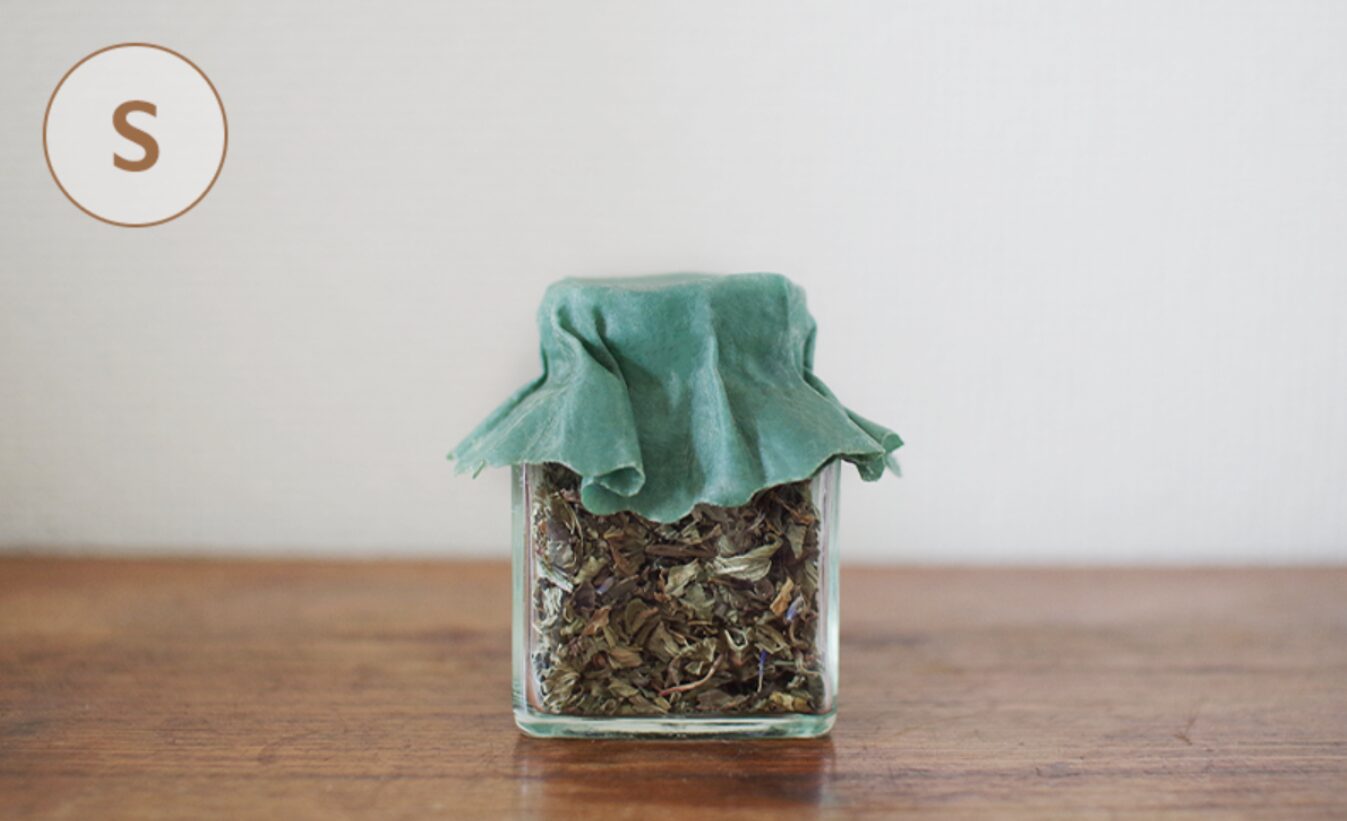
Size S is made to fit a 3″ plate and measures approximately 13 cm in diameter.
It is sized to fit small bowls, lids of empty bottles, and onion and ginger slices, and sticks snugly to foodstuffs. Wrap it around a bunch of bananas to prevent them from over-ripening.
You can also use the ACO WRAP wrapped around leftover onions as a little bowl. It is very convenient to place the cut vegetables in the bowl of plastic wrap that was wrapped earlier to reduce the amount of washing during preparation.
aco wrap M size
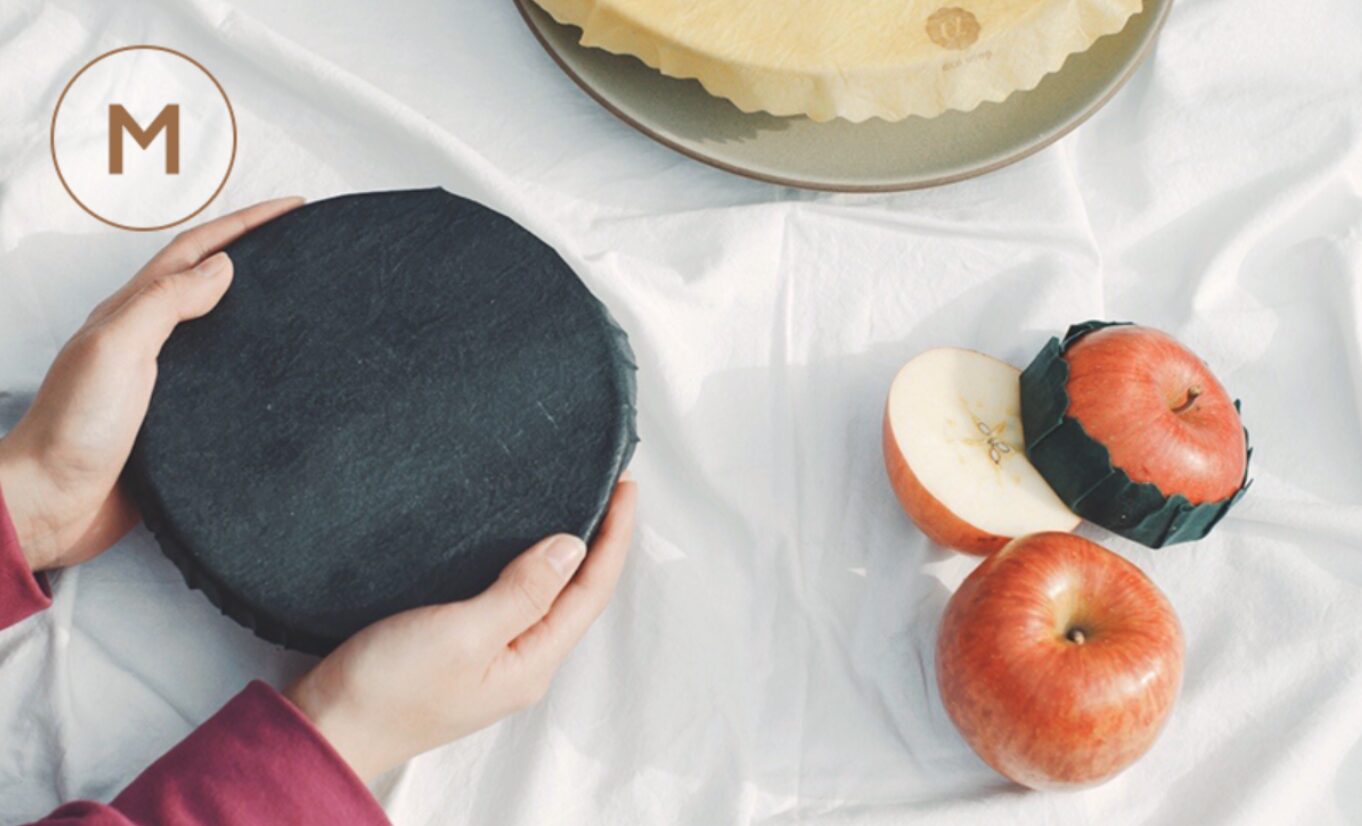
Size M is made to fit the 5″ size and has a diameter of 19 cm.
It is the perfect size for a single dish, a leftover side dish, or a cut of avocado or apple, and vegetables such as carrots can be wrapped around it to reduce water loss.
One of the best ways to store cheese among food items is in ACO WRAP. When stored in plastic-based wrap, cheese dries out and becomes crumbly, but when stored in ACO WRAP, the moisture-retaining power of beeswax keeps it from drying out, and the material allows a little air to pass through, helping to regulate moisture content during fermentation.
aco wrap L size
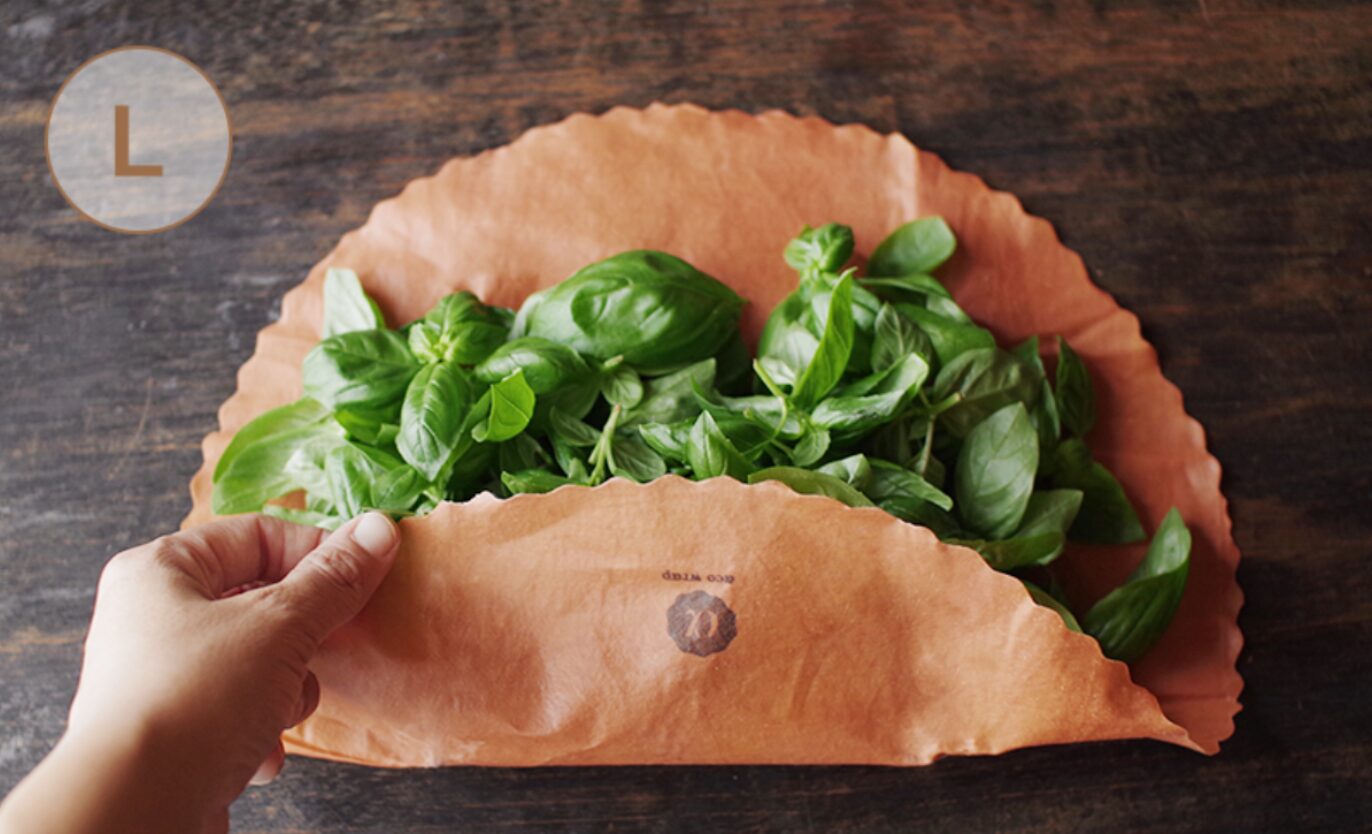
Size L is made to fit the 9″ size and has a diameter of 33 cm.
This size is capable of wrapping and carrying large leafy vegetables, bread, and sandwiches. It can also be used as a container for storing cut vegetables if the edges of the wrap are folded to form a bag shape. The honeydew retains moisture and prevents drying, so leafy greens will last longer.
ACO WRAP is also very useful when camping. By wrapping pre-cooked food and bread in aco wrap and taking them with you, there is no waste when you are done eating, and you can wrap up any leftovers and take them home with you. When spread out on the table, it can also be used as a simple plate. Since it is quick-drying and easy to clean with water, we recommend using it outside for camping and picnics.
Conclusion

In this issue, we introduced the appeal of ACO WRAP and its recommended products.
Made in Kameoka City, Kyoto Prefecture, which was one of the first cities to declare “zero plastic waste,” each piece of ACOWRAPis carefully manufacturedusing environmentally friendly materials, and the packaging is also made of paper and plastic-free.The beautiful colors of the product, which incorporate natural hues, are perfect for use with seasonal vegetables.
Please keep your eyes on “aco wrap,” which is evolving day by day through its production with an emphasis on “Made in Japan.
aco wrap official website and online store
acowrap Instagram




